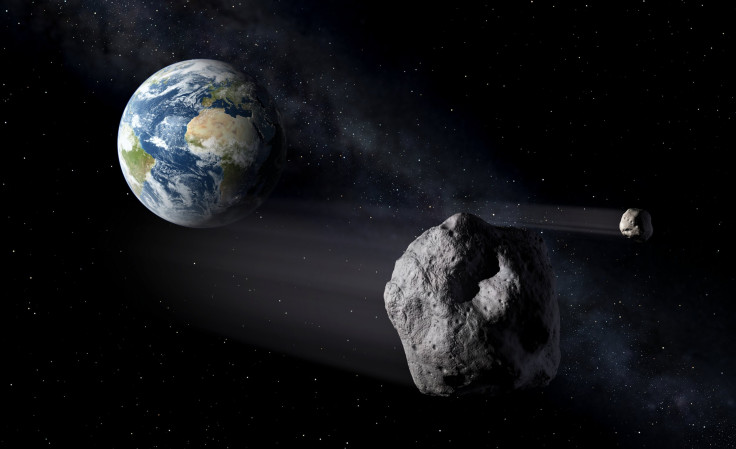Massive 500-Foot-Wide Asteroid To Fly By Earth Next Week, Poses No Risk

An asteroid nearly as big as the Great Pyramid of Giza will be flying past Earth next week, but there is no cause for worry as the space rock is not on a collision course and will pass safely by our planet.
The asteroid, named 2016 NF23, is a near-Earth object (NEO) that spans somewhere around 230-525 feet in diameter and is hurtling through space at a speed of around 20,000 miles per hour, according to NASA. It has been classified as a "potentially hazardous" space rock, which might sound a little scary, but is a designation given to every asteroid coming within 5 million miles of our planet.
Such rocks have the slimmest possibility of collision, and according to NASA, the upcoming approach of 2016 NF23 isn’t one those occasions. At around 11:40 p.m. EDT on Aug. 28, the rock will fly at a distance of more than 3 million miles from Earth.
This is more than 13 times the distance between Earth and Moon (13 lunar distance or LD) and is totally safe for Earthlings.
"There is absolutely nothing for concern by this pass of 2016 NF23,” Lindley Johnson, planetary defense officer at NASA, told Space.com. “This object is merely designated a Potentially Hazardous Asteroid (PHA) because its orbit over time brings it within 5 million miles (8 million kilometers) of Earth's orbit, but there is nothing hazardous to Earth or even unique about this pass of the asteroid."
Near Earth objects or NEOs are those asteroids and comets that come within 30 million miles of Earth’s orbit. Such rocks, whether larger or smaller than 2016 NF23, fly by Earth from time to time. NASA planetary defense maintains a catalog under which NEOs are discovered and then tracked through their orbits.
The identification and tracking of potentially hazardous NEOs are extremely important as their orbital paths can be disrupted due to the gravitational tug of other planets over time. This could set the bodies on a possible collision course.
As of early 2018, NASA had identified more than 8,000 NEOs that are at least 460-feet wide. If on a collision course, asteroids this big can wipe out an entire state. But, here is the thing. This is not even a half of nearly 25,000 NEOs of the same size thought to be zooming through space. Asteroids smaller than this, on the other hand, could be existing on a scale of millions.
For instance, a space rock named NEO 1998 SD9 spanning around 126-282 feet in diameter will be flying by Earth at 4.2 LD. This would be the closest approach of a potentially hazardous asteroid for next two months. That said, while no currently known NEO is predicted to impact Earth over next 100 years, the global mission to find the unaccounted bigger and smaller asteroids still goes on.
© Copyright IBTimes 2025. All rights reserved.





















